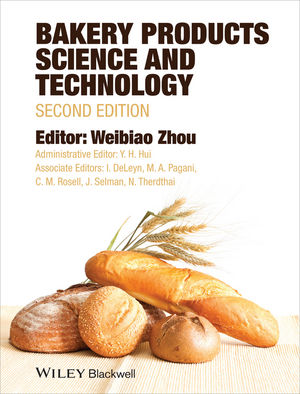Confirming the gluten-free status of snack or bakery products and ingredients

Gluten-free products abound in the marketplace. While consumers might select gluten-free products for several reasons, the manufacturers of gluten-free products must protect the segment of those consumers who are highly sensitive to the ingestion of gluten. Consumers with celiac disease must avoid completely avoid gluten and will respond to ingestion of trace levels of gluten. Consumers with wheat allergies are similarly susceptible to the ingestion of trace levels of gluten from wheat. While wheat-allergic consumers may be able to safely ingest barley and other sources of gluten, these consumers also likely rely on gluten-free products.
Accordingly, FDA regulates gluten-free label claims with the aim of protecting consumers with celiac disease or a wheat allergy. FDA definition of gluten-free is less than 20 ppm gluten or 0.002 percent. Manufacturers of gluten-free products must take appropriate steps to assure that products bearing gluten-free label claims have less than 20 ppm gluten. Similarly, ingredient manufacturers who sell ingredients to the gluten-free industry are expected to comply with the specification of less than 20 ppm gluten.
The confirmation of gluten-free status requires the use of sensitive, highly specific gluten-detection methods. Many commercial gluten test methods exist. Selection of the best method can be daunting—and is made more daunting because, to my knowledge, no one has conducted extensive comparative testing of the various methods to determine if all of them yield similar results on identical samples.
Our laboratory has not evaluated all of these gluten test methods either, but I will offer some advice on the methods that we find useful and reliable.
The optimal analytical approach to confirm the gluten-free status of a product or ingredient involves the use of highly specific and sensitive methods able to detect gluten at levels of 20 ppm or less. Immunochemical methods are the ideal approach, offering both specificity and sensitivity.
Gluten-specific enzyme-linked immunosorbent assays (ELISAs) are commercially available and preferred over other approaches because of their specificity and sensitivity. These gluten ELISAs rely upon antibodies that are very specific in the recognition of gluten. Several different antibodies are used in commercial gluten ELISAs. The R5 antibody serves as the basis for gluten ELISA kits sold by r-Biopharm and Neogen Corp. The G12 antibody serves are the basis for the gluten ELISA kits sold by Romer Laboratories.
These particular gluten ELISA kits are highly specific with virtually no risk of false-positive responses. These methods are also highly sensitive with lower limits of quantification of 5 ppm gluten. These kits are often sold as gliadin ELISA kits, because the antibodies actually recognize only the soluble portion of the gluten complex that can be extracted for analysis. By convention, gliadin X2 = gluten. These commercial ELISA kits are capable of detecting gluten from all major and minor sources of gluten, including wheat, barley, rye and related grains such as triticale, spelt and others. The FDA recommends the use of the R5-based ELISA kits for gluten detection. In our laboratory, the Romer G12 ELISA kit offers comparable results to the R5 ELISA kit.
These commercial ELISA kits are sold primarily in two formats: quantitative and qualitative versions. The quantitative versions are typically sold as 96-well ELISA plates where the precise determination of the amounts of gluten in samples can be determined. Performing the quantitative ELISA kits requires access to a laboratory, some laboratory equipment and an analyst skilled in ELISA analysis. Often, food companies choose to send out any samples for quantitative gluten determination. If using a third-party laboratory for gluten detection, it is recommended to select an ISO-certified laboratory that has gluten ELISAs within its ISO testing scope, as we do at the Food Allergy Research and Resource Program (FARRP) Laboratory at the University of Nebraska.
The qualitative ELISA methods are lateral flow devices (LFDs) that function similarly to home pregnancy tests. LFD kits are intended for use within manufacturing facilities and can provide qualitative results within 10–15 minutes. LFDs were designed for evaluation of the effectiveness of allergen-cleaning procedures through the testing of equipment surfaces or final rinse waters from clean-in-place (CIP) systems.
With LFDs, swabs are used to obtain samples of any residue remaining on equipment surfaces. The swabs are extracted, and the extraction solutions are applied to the LFDs. As the fluid wicks up the LFD strip, a line will appear if the antibody bound to the strip encounters gluten. Typically, gluten LFDs have a detection limit of 5 ppm. Some companies use LFDs on finished products or ingredients, although not all manufacturers of LFD kits endorse the use of these kits for foods or ingredients. Matrix effects can occur with foods or ingredients, so the 5 ppm detection limit should be recognized as an average among all matrices and matrix-based variability should be anticipated. Consequently, if using LFDs for foods or ingredients, periodic confirmation of the results using quantitative gluten ELISAs is recommended.
R-Biopharm has three quantitative gluten kits: the Ridascreen FAST Gliadin kit with a lower limit quantification of 10 ppm gluten, the Ridascreen Gliadin kit with a lower limit of 5 ppm gluten and the Ridascreen Gliadin Competitive kit intended to detect gluten peptides resulting from partial hydrolysis of the gluten protein. R-Biopharm also has a gluten LFD called RidaQuick. The R5 antibody is used in all of these methods.
Neogen Corp. offers both a quantitative and qualitative kit for gluten detection. The Veratox Gliadin R5 kit has a limit of quantification of 5 ppm gluten. The Reveal 3D for Gluten kit is a LFD allowing qualitative detection of gluten at 5 ppm.
Romer Laboratories offers both a quantitative and qualitative kit for gluten detection. The AgraQuant Gluten kit relies on the G12 antibody and has a limit of quantification of 4 ppm gluten. Romer Laboratories also has a LFD kit called AgraStrip.
Gluten kits from these companies offer excellent analytical approaches to determine that products and ingredients are gluten-free. Because of their specificity and sensitivity, use of these test methods assures that products fall within the allowable FDA definition of gluten-free.
Several other test kit companies also market ELISA kits based on the R5 and G12 antibodies, but comparisons have not been done to determine if these kits would yield similar results. Additionally, several alternative quantitative test methods are commercially available for the detection of gluten. In particular, ELISA kits based on the so-called Skerritt antibodies are available. However, in our hands, the Skerritt antibodies tend to miss the detection of barley proteins, so we do not recommend this approach.
Several qualitative gluten tests are also based upon the Skerritt antibodies and are not recommended because they are likely to miss the detection of barley.
Qualitative methods based upon ATP detection are also marketed in part for the detection of gluten residues. However, ATP is not a protein, and the results of ATP testing may not match more-specific gluten testing. ATP detection is a good approach to the assessment of the removal of biological material in general, but it is not specific to gluten.
Qualitative methods based upon total protein detection are also marketed for sanitation assessment. These methods will detect protein from any source and are not specific to gluten protein sources. These methods are adequate for sanitation assessment in general, but are not specific to gluten.
Looking for a reprint of this article?
From high-res PDFs to custom plaques, order your copy today!






